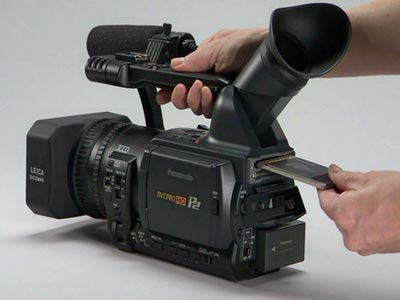

can easily cost upwards of $200k, which puts that type of camera squarely outside the budget of 98% of independent producers and is one reason the handheld HD camcorder market was booming in 2004. For a full listing of the camera's specs and features check out the Panasonic website HERE.Ī typical full-sized ENG-HD camcorder such as the Sony F900 or Panasonic Varicam fully configured with lenses, batteries, tripod plates etc.

And so Panasonic jumped ahead of the competition with it's tapeless format, P2.Įnter the Panasonic AG-HVX200: A brand-new handheld HD camcorder with both a tape drive for SD formats only and a new tapeless recording media called "P2" that could record every format the camera shoots from SD all the way to 1080 HD in DVCPRO-HD, a vastly superior camera codec to HDV and even HD-CAM. 1) They were all tape-based and because of the physical tape size (exactly the same as mini-DV) were very limited in the data-rate that could be written to tape 2) HDV's color space of 4:2:0 was inferior to even Panasonic's SD offering of DVCPRO-50 which is 4:2:2 (see more about what color space is in my page about video color) and 3) None of these cameras offered a real 24p mode (Sony and later Canon attempted to replicate this with "frame mode" which was an in-camera de-interlacing that caused many problems later in editing. What nobody realized until 2004 was the Panasonic had already realized 3 big limitations with HDV-format cameras.

They were the first to provide a handheld pro-sumer camcorder that not only shot at 24 frames-per-second in progressive mode but also had a chipset that captured color in a rich "film-like" appearance which spawned many productions wanting to take advantage of both features.īack in 2003 JVC launched the first handheld HD camcorder, the JY-HD10U and Sony quickly followed with it's offering the FX1. Ever since the DVX100 series Panasonic has proven that they really understand the needs and wants of the indie film producer.


 0 kommentar(er)
0 kommentar(er)
